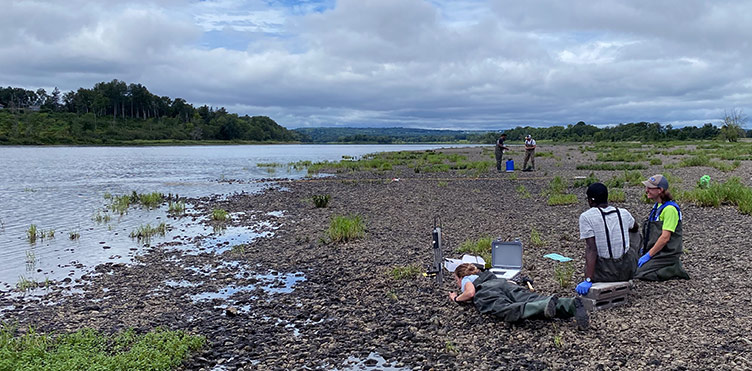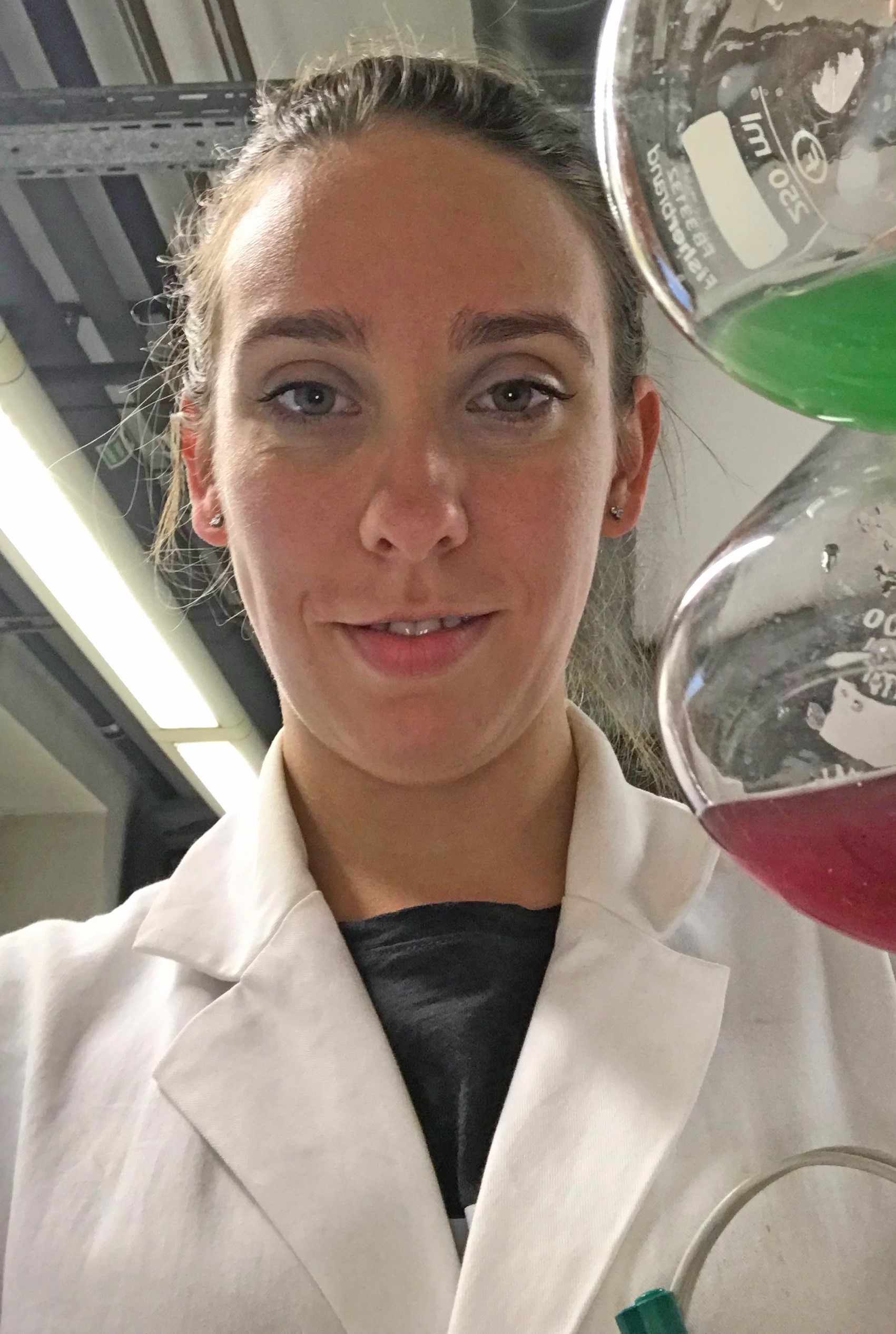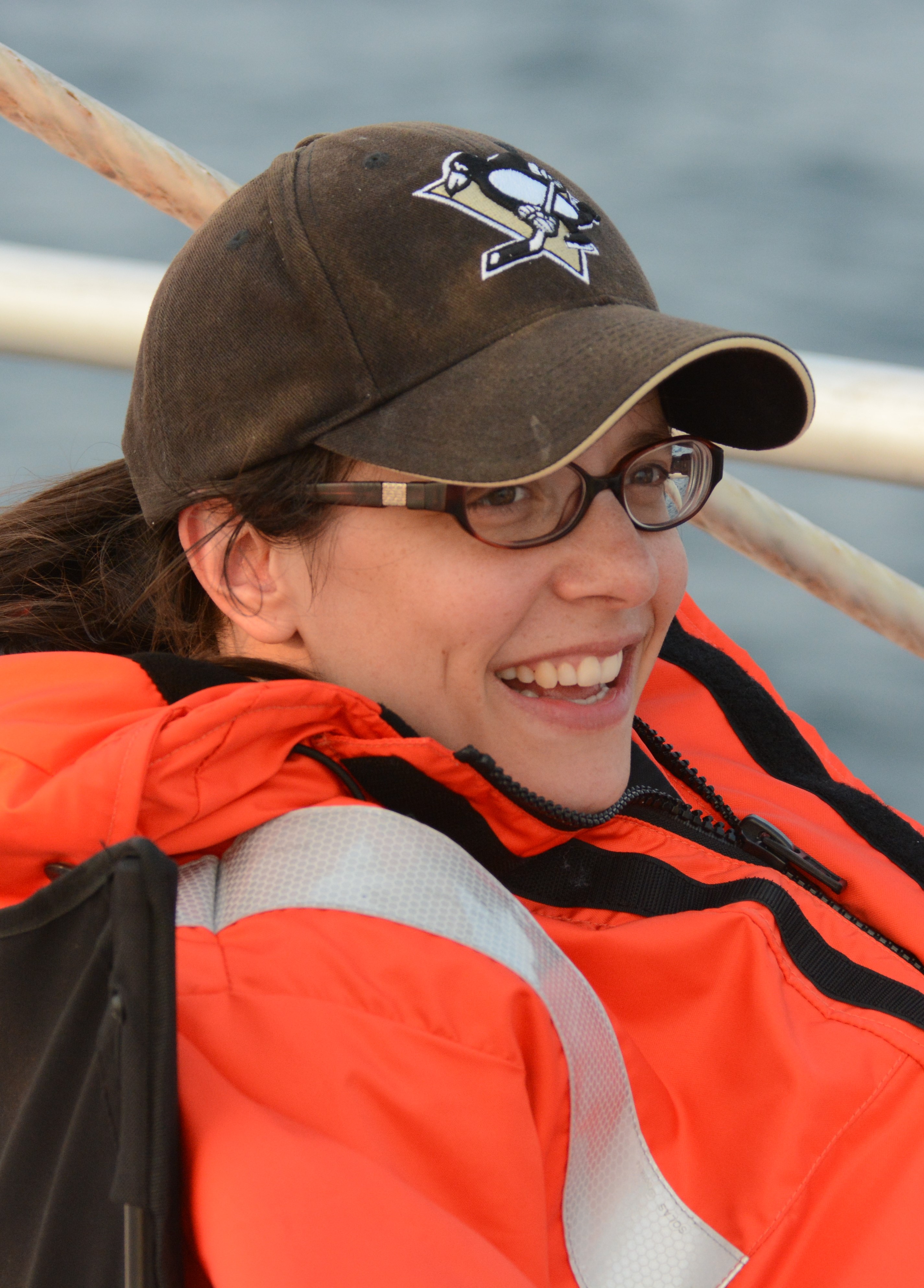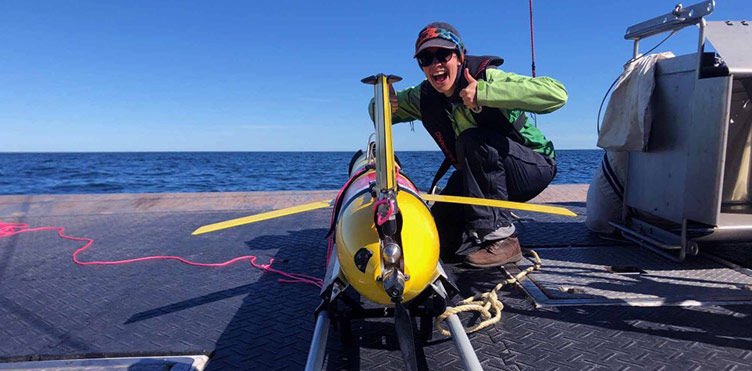Innovative research at UNB plumbs ocean depths and seeks alien life
Author: Development and Donor Relations
Posted on Jan 6, 2023
Category: Innovation , News and Events

From protecting life in the oceans to the limitless search for alien life in outer space, researchers at the University of New Brunswick are breaking new ground through innovative approaches to complex questions, helped in large part by our donors.
Two researchers and faculty members, Allison Enright, an environmental electrochemist, and Kimberley Davies, an oceanographer, are being supported by donations as they develop amazing new techniques relating to their areas of study.
For Allison, distinguishing between chemical processes and biosignatures may help in discerning alien life forms, while for Kimberley, new technology in the form of an underwater glider is helping keep track of the endangered right whale.
“We would not have been successful without our donors,” said Kimberley, an assistant professor in marine biology on the Saint John campus and recipient of the Allan and Elizabeth Quartermain Research Fund. Allison, an assistant professor in earth sciences on the Fredericton campus, said that without the support she received from the Allan and Elizabeth Quartermain Research Fund, she would not have been able to renovate and set up her research laboratory as quickly as she did in 2020.
Allison, an assistant professor in earth sciences on the Fredericton campus, said that without the support she received from the Allan and Elizabeth Quartermain Research Fund, she would not have been able to renovate and set up her research laboratory as quickly as she did in 2020.
“Without that support, there would have been a huge bottleneck for me setting up the lab,” she said. “It probably would have been an entire year of delay. So having those funds available was incredibly important.”
Robert A. Quartermain (BScGeol’77, DSc’09) is the retired executive chairman, director and founder of Pretivm Resources Inc. He established the Allan and Elizabeth Quartermain Research Fund to honour his parents and to support timely and strategic investments in the most promising researchers in their respective fields.
Allison’s area of research recently led her to Harvard University where, as a visiting scholar, she participated in a project known as the Interdisciplinary Consortium for Astrobiology Research (ICAR). ICAR supports NASA’s astrobiology program, which examines the distribution, evolution and origins of life in the universe. Allison said the development of an agnostic biosignature is one that doesn’t depend on terrestrial biology and biosignatures to be used for proof of life.
Here on earth, Allison said her work can help with wastewater management and environmental monitoring. “When you are dealing with contaminants and running remediation programs, if you are using organisms to stimulate a particular process, you can quantify whether they are doing what you want,” she says. “It allows long-term monitoring of sites to ensure they stay safe and that there are no big changes to the chemical processes.”
She said this will be especially important as the climate heats up. “With this technology, we would be able to give a high degree of confidence that these sites are continuing to be safe or, if they are not, we would know early on and be able to take preventative action before water supplies are polluted and people could be hurt.” Kimberley’s research focus is on ocean ecology. She studies the endangered right whale — there are believed to be fewer than 350 in the North Atlantic — as a model organism for studying marine hotspots. She has pioneered the use of a new oceanographic technology, the underwater acoustic glider, for monitoring the North Atlantic right whales in shipping lanes and in fishing areas where they are at high risk of mortality.
Kimberley’s research focus is on ocean ecology. She studies the endangered right whale — there are believed to be fewer than 350 in the North Atlantic — as a model organism for studying marine hotspots. She has pioneered the use of a new oceanographic technology, the underwater acoustic glider, for monitoring the North Atlantic right whales in shipping lanes and in fishing areas where they are at high risk of mortality.
The gliders, first deployed in 2020, are already making a difference. “Every time the glider detects a whale when it is in a certain designated management area, Transport Canada will slow ships to 10 knots or DFO will close the area around it to fishing,” Kimberley said. “It absolutely is fully integrated into management plans for right whales and it is absolutely making a difference.”
The small, unmanned gliders move back and forth through the water by changing buoyancy. The machine has a hydrophone sensor attached, which records sounds in the ocean. A software system then processes the acoustic data and identifies the different whale calls.
Kimberley Davies and the underwater acoustic glider in the field.
The gliders are a huge improvement over the airplane spotters that were previously used to monitor shipping lanes and fishing grounds. “You can leave the gliders in for months so you have monitoring 24 hours a day, seven days a week,” Kimberley said. “Whereas with planes, you might get one or two flyovers of an area in a week.”
Kimberley said that, like the work Allison is doing, there are broader applications beyond trying to save the right whale.
“We’re making an impact on ocean conservation and sustainable development as well,” she said. “Industries are relying on sustainably using our oceans. These right whale deaths cost a lot of money to industry, so we’re working not only to try and save the species but also to facilitate sustainable development of our ocean industries.”

